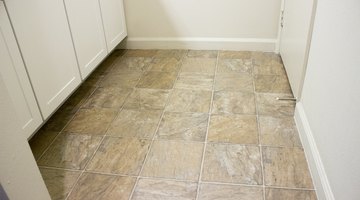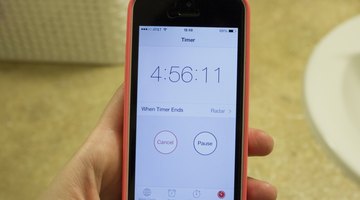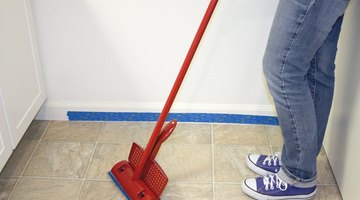How to Seal Self-Stick Vinyl Tiles
Self-stick vinyl tiles are a popular choice among homeowners who want a new flooring look with a low investment of time and money. Because of vinyl's porous nature, dirt will become ground into the tiles over time, resulting in a dingy finish. In addition, vinyl tiles are prone to water damage.

Applying a sealant over self-stick tiles will form a hard barrier and help ensure the longevity of the tiles.
Things You Will Need
- Broom
- Painter's tape
- Sponge mop
- Vinyl composition floor tile sealant
Tip
If the flooring begins to yellow after applying sealant, clean with a Magic Eraser, then apply a new coat of sealant.
Warning
Do not apply one thick layer of sealant in place of two thin coats. It will not harden properly.
-
Sweep the floor, then mop to remove all traces of dirt and debris. Allow the floor to dry completely.
-
Tape over the baseboards to protect them from the sealant.
-
Pour the sealant into a bucket, and dip a mop with a sponge head into the bucket. Press out the sponge so it is not dripping.
-
Apply a thin layer of sealant to the tiles, beginning along the wall and turning the mop at the edge of the walls to form a U-shape and travel in the opposite direction. This will prevent you from going over the same section twice.
-
Allow the sealant to dry for four or five hours. The sealant will appear milky white when applied, but it will be clear when dry.
-
Apply a second layer of sealant in the same manner, if desired. Allow to dry before allowing traffic across the floor.






The Drip Cap
- Self-stick vinyl tiles are a popular choice among homeowners who want a new flooring look with a low investment of time and money.
- In addition, vinyl tiles are prone to water damage.
- Applying a sealant over self-stick tiles will form a hard barrier and help ensure the longevity of the tiles.
- Tape over the baseboards to protect them from the sealant.
References
Writer Bio
Gail Logan is a magazine editor and freelance writer based in Atlanta, AL. She received her B.A. in Journalism from Patrick Henry College. For the past four years, she has written home design, travel and food features for national magazines, including "Coastal Living," "Texas Home and Living," "Log Home Design," and "Country's Best Log Homes." When not writing, she mentors inner-city children.
Photo Credits
- Nicolas Agustin Cabrera/Demand Media
- Nicolas Agustin Cabrera/Demand Media
- Nicolas Agustin Cabrera/Demand Media
- Nicolas Agustin Cabrera/Demand Media
- Nicolas Agustin Cabrera/Demand Media
- Nicolas Agustin Cabrera/Demand Media
- Nicolas Agustin Cabrera/Demand Media
- Nicolas Agustin Cabrera/Demand Media
More Articles



